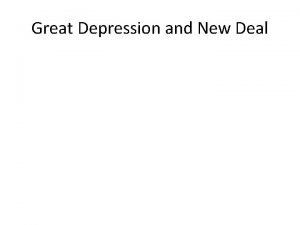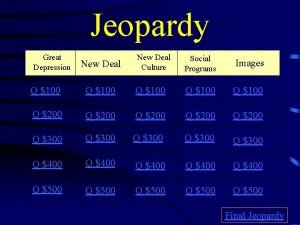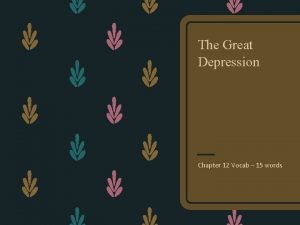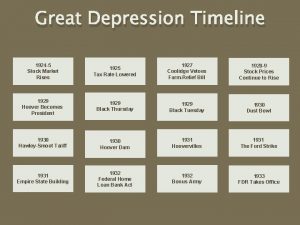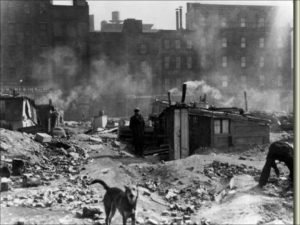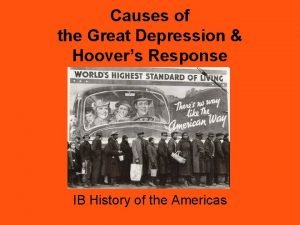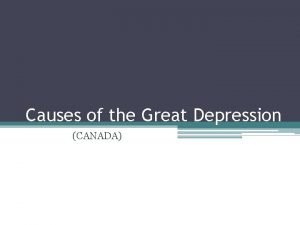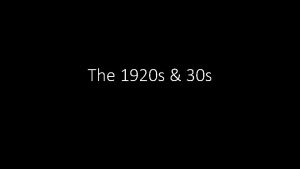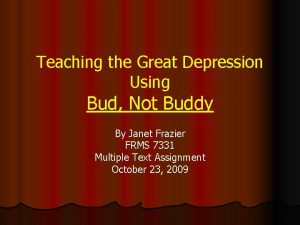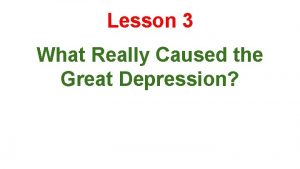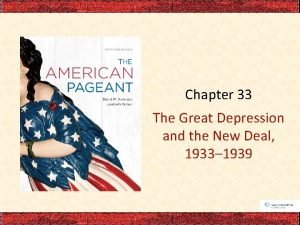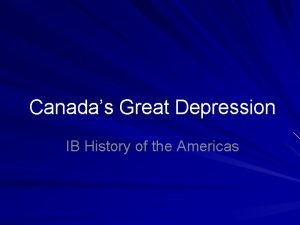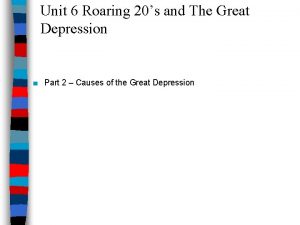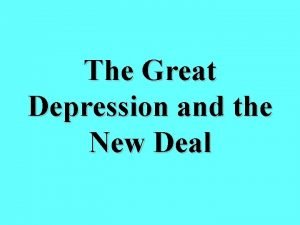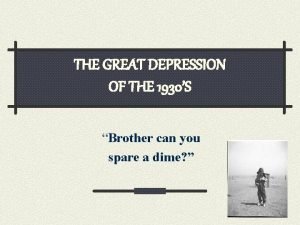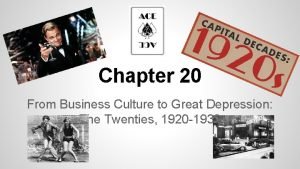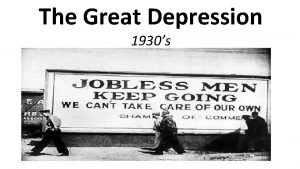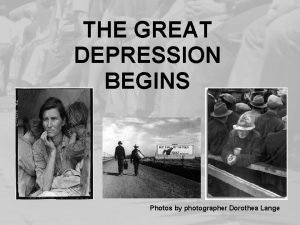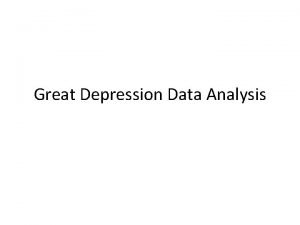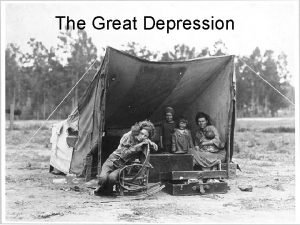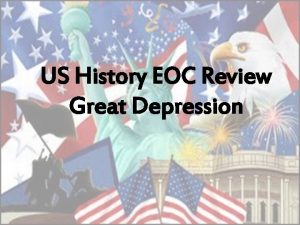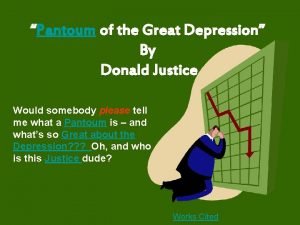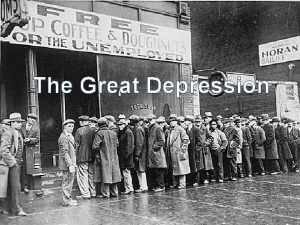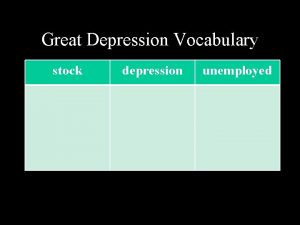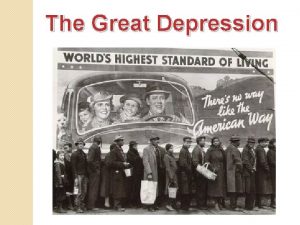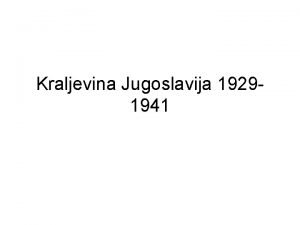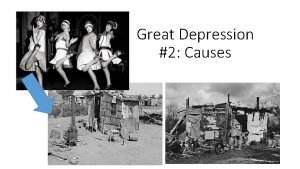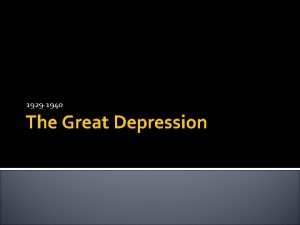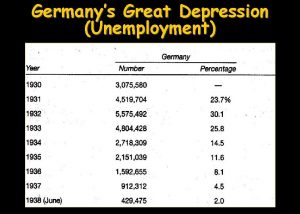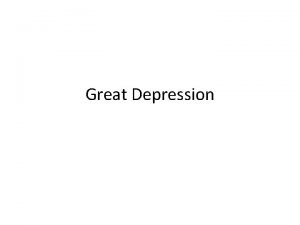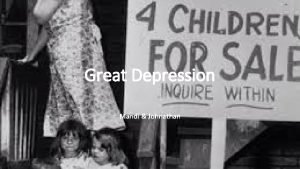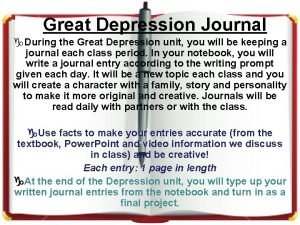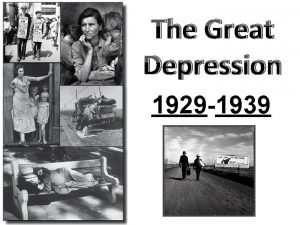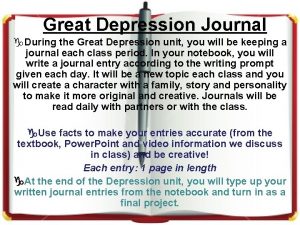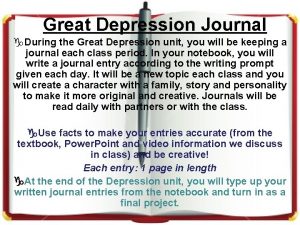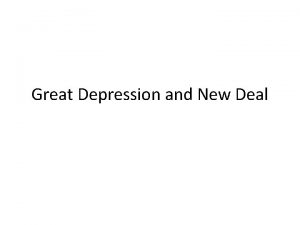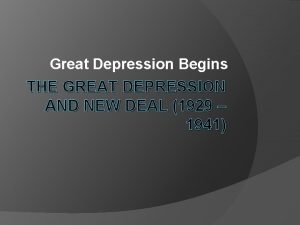The Great Depression 19291941 n n Depression an






























- Slides: 30

The Great Depression 19291941 n n Depression - an economy with high unemployment, falling income, failing business, decline in production and sales. The Great Depression - An extreme economic slump in America in the 1930 s

Causes of The Great Depression

1. Consumer Debt 2. Income Gap 3. Overproduction 4. Global Depression 5. Stock Market Crash –Oct. 29 th 1929 – immediate cause or trigger. 6. Banking Crisis 7. Business Cycle

1. Consumer Debt

After WWI, there was an increased demand for goods but in actual fact people could not afford to buy all of the goods they wanted. SOLUTION? Installment – buy now, pay later. Plan

The uneven distribution of wealth didn’t stop the poor and middle class from wanting to possess luxury items, such as cars and radios…

By the end of the 1920 s, 60% of the cars and 80% of the radios were bought on installment credit.

Once the economy began to slow down, and people started losing their jobs, they were not able pay off their debts.

2. Income Gap n n Consumers lacked sufficient income to purchase goods; farmers’ income fell. Workers’ income failed to keep pace with prices. Wages were as little as 20 – 25 cents per hour! n Even the best employer Ford Motor Company paid only $5. 00/Day for a 6 AM-6 PM shift!

Income distribution in 1929

Question 1: How much did a bushel of wheat cost in 1925? 1932? How might this graph explain why farmers were hit so hard during the Great Depression?

3. Overproduction of Goods n n n High demand for goods created increase in production. During WWI farmers and businesses produced excess of goods. After the war the demand for goods fell. This led to overproduction, people weren’t buying, businesses lost money, laid off workers and eventually went out of business.


Question 2: How many people were unemployed in 1925? In 1929? In 1932? What conclusion can you draw from that?


4. Global Depression n World trade declined in the 1920 s. n European countries had massive war debts to pay n European consumers were not able to buy American goods. n American industries were stuck with surplus goods.

5. Stock Market Crash n Just as one could buy goods on credit, it was easy to borrow money to invest in the stock market; This was called “margin investing” (or “buying on margin. ”)

Small investors were more eager to invest in the Stock Market in large numbers because the “margin requirement” was only 10%.

This meant that you would buy $1, 000 worth of stock with only 10% down, or $100. People leapt at the chance to invest in business!

How did the Stock Market Crash? n n n March 1928 – Stock prices soared and the number of shares traded rose sharply People rush to invest Stock prices were 400 percent higher Investors became cautious, stop investing Fewer buyers drove prices down October 29 th, 1929 “Black Tuesday” n n Confidence in stock market failed Investors began selling stocks Margin calls- Banks wanted their money from brokers, and brokers wanted their money from investors. Neither was able to pay and the stock market crashed.

Great Crash Question 3: What was the average stock value in 1929? 1932? What can you infer from the information in this graph?

Why did the market crash? n n Many people bought stocks on margin— like a loan Companies lied about their profits — No regulation Republican Presidents in the 1920 s believed in laissez faire—no control on businesses Stock market was not regulated by government

With the loss of confidence in stocks, people began to lose confidence in the security of their money being held in banks. Customers raced to their banks to withdraw their savings.

6. Bank Failures Banks made unsound loans; bank failures resulted when the loans could not be repaid. n 25% of the Banks in the US closed n Bank Runs and banks closing their doors led to people losing their life savings. n



7. Business Cycle n n n Regular ups and downs in the economy. The economy naturally goes through ups and downs ( Boom and Bust periods ) BOOM/PROSPERITY/PEAK HIGH DEMAND – Leads to - MORE PRODUCTION which leads to HIGHER EMPLOYMENT and MORE DEMAND but it eventually produces INFLATION

Business Cycle SLOWDOWN/Bust n INFLATION/OVERPRODUCTION Leads to LESS PRODUCTION = LAY OFFS = LESS SPENDING = LOWER CONFIDENCE = LESS INVESTMENT = HIGHER UNEMPLOYMENT UNTIL SURPLUSES ARE USED UP and the economy recovers

n So the economy in a free enterprise goes through economic prosperity, recessions and depressions as a result of a regular business cycle.

 What is deflation
What is deflation Laissez faire great depression
Laissez faire great depression Great depression vocabulary jeopardy
Great depression vocabulary jeopardy Great depression vocabulary
Great depression vocabulary Five effects of the great depression
Five effects of the great depression Timeline of the great depression
Timeline of the great depression What was hoover's response to the great depression
What was hoover's response to the great depression What was hoover's response to the great depression
What was hoover's response to the great depression Great depression political cartoons
Great depression political cartoons Hawley-smoot tariff great depression
Hawley-smoot tariff great depression Bud not buddy great depression
Bud not buddy great depression Great depression budget activity
Great depression budget activity Chapter 33 the great depression and the new deal
Chapter 33 the great depression and the new deal Birth rate during the great depression
Birth rate during the great depression The great depression outline
The great depression outline Great depression
Great depression Hawley smoot tariff apush
Hawley smoot tariff apush Great depression drawing
Great depression drawing Great depression
Great depression James zwerg
James zwerg New woman
New woman Okies great depression
Okies great depression 2014 brain wrinkles answer key
2014 brain wrinkles answer key Poverty during the great depression
Poverty during the great depression Five effects of the great depression
Five effects of the great depression Great depression causes
Great depression causes Great depression
Great depression What is the main idea of this cartoon?
What is the main idea of this cartoon? Pros and cons of the great depression
Pros and cons of the great depression Stock market crash 1929 political cartoons
Stock market crash 1929 political cartoons Pantoum of the great depression analysis
Pantoum of the great depression analysis

